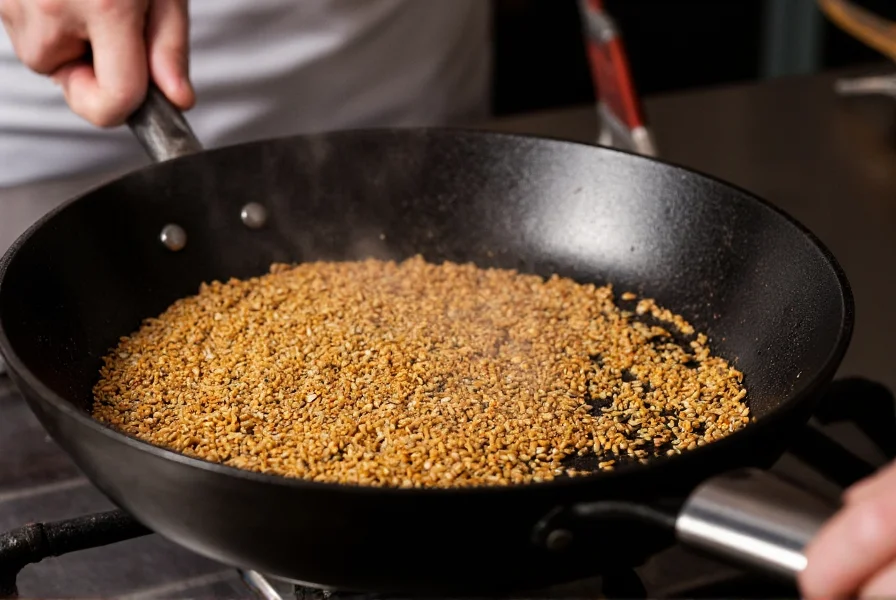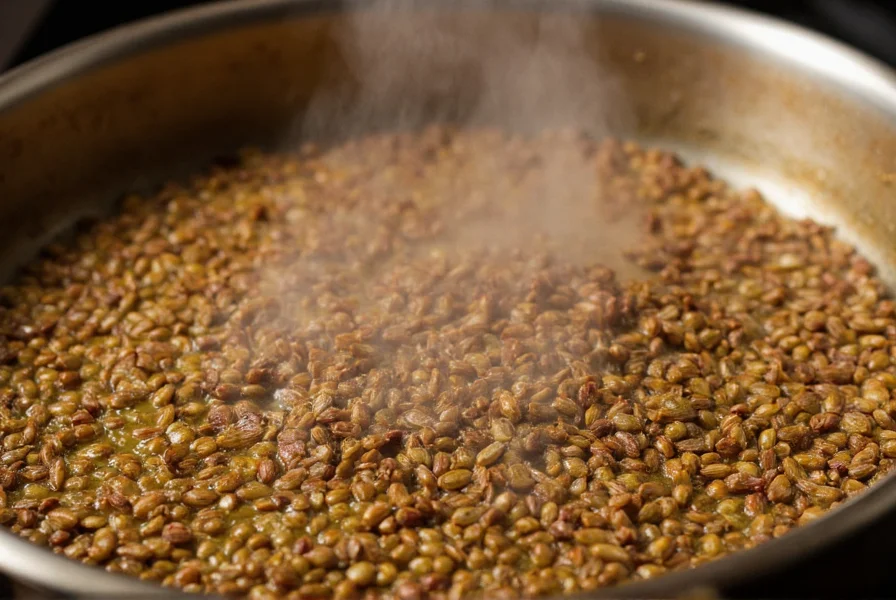When searching for cumin video content, viewers most benefit from visual demonstrations that showcase proper handling techniques for this ancient spice. Unlike text-based instructions, video format uniquely captures the critical visual and auditory cues of toasting cumin seeds until they release their distinctive aroma without burning—a common pitfall for beginners. High-quality cumin video tutorials provide immediate feedback mechanisms through visual color changes and sound indicators that written recipes cannot convey.
Understanding Cumin's Culinary Significance
Cumin (Cuminum cyminum) has been used for over 5,000 years across Middle Eastern, Indian, and Latin American cuisines. Its warm, earthy flavor profile with subtle citrus notes makes it indispensable in dishes ranging from Indian curries to Mexican chili. The compound thymol gives cumin its distinctive aroma and contributes to its digestive benefits. When evaluating cumin video content, look for creators who demonstrate the spice's transformation when properly toasted—a process that develops complex flavor compounds while reducing bitterness.

Why Video Format Excels for Cumin Education
Text instructions often fail to convey the precise moment when cumin seeds reach optimal toastiness. Video content solves this through:
| Learning Aspect | Text Limitation | Video Advantage |
|---|---|---|
| Toasting duration | "Toast 1-2 minutes" | Shows exact color change and sound of popping seeds |
| Heat level | "Medium heat" | Demonstrates oil shimmer and seed movement |
| Grinding technique | "Grind to fine powder" | Shows proper mortar-pestle motion or grinder settings |
Top 5 Cumin Video Techniques Worth Learning
1. The Perfect Toast Method
Quality cumin video tutorials emphasize dry-toasting seeds in a preheated pan over medium-low heat. Watch for creators who demonstrate the critical transition point when seeds change from pale beige to golden brown—typically within 60-90 seconds. Over-toasting creates bitterness that ruins dishes. The best videos include close-up shots showing the exact moment to remove seeds from heat.
2. Blooming in Oil Technique
Advanced cumin video content demonstrates "blooming"—adding toasted seeds to hot oil to release maximum flavor compounds. Effective videos show the precise oil temperature (shimmering but not smoking) and the characteristic sizzle when seeds hit the oil. This technique distributes cumin's essential oils evenly throughout dishes, creating more complex flavor profiles than simply adding ground cumin.

3. Grinding Fresh vs. Pre-Ground Comparison
Informative cumin videos often include side-by-side comparisons of dishes made with freshly ground cumin versus pre-ground spice. The visual and taste differences are dramatic—freshly ground cumin shows vibrant color and releases visible aromatic steam when added to dishes. Look for videos that explain how pre-ground cumin loses 40% of its essential oils within 4 months of grinding.
4. Cultural Context Demonstrations
The most valuable cumin video resources place the spice within its cultural context. Watch for creators who demonstrate traditional preparation methods from specific regions—like Indian jeera tempering or Mexican comino seasoning techniques. Authentic videos often include explanations of why certain dishes require specific cumin forms (whole seeds versus powder) and how regional variations affect flavor profiles.
5. Storage Preservation Methods
Quality cumin video content addresses proper storage techniques that maintain potency. Effective demonstrations show the dramatic flavor difference between properly stored cumin (in airtight containers away from light) versus degraded spice. The best videos include time-lapse sequences showing color and aroma changes over time under different storage conditions.
Evaluating Cumin Video Content Quality
When searching for reliable cumin video resources, consider these quality indicators:
- Technical accuracy: Does the creator explain the science behind toasting temperatures?
- Practical demonstrations: Are techniques shown from multiple angles with clear close-ups?
- Contextual knowledge: Does the creator discuss regional variations and historical uses?
- Error prevention: Are common mistakes demonstrated and explained?
- Ingredient sourcing: Does the video address quality differences between cumin varieties?
Where to Find Authoritative Cumin Video Content
The most trustworthy cumin video resources come from:
- Certified culinary instructors with documented expertise
- Food historians specializing in spice trade routes
- Chefs from regions where cumin is traditionally used
- Research institutions studying spice chemistry
Avoid videos that make unsupported health claims or demonstrate unsafe handling practices. Quality cumin video tutorials focus on practical application while acknowledging regional variations and proper safety protocols.
Common Cumin Video Mistakes to Avoid
Many amateur cumin videos contain these critical errors:
- Using high heat that burns seeds instead of properly toasting them
- Mixing cumin with other spices before toasting, preventing proper temperature control
- Using pre-ground cumin when recipes specifically require whole seeds
- Storing cumin in transparent containers that degrade flavor compounds
- Overestimating cumin's shelf life (properly stored, whole seeds last 2-3 years while ground loses potency in 6 months)
Conclusion
The most valuable cumin video content combines scientific understanding with practical demonstration, showing not just how to use this ancient spice but why certain techniques produce superior results. By focusing on videos that demonstrate proper toasting methods, cultural context, and storage practices, viewers gain actionable knowledge that transforms their cooking. Whether you're exploring traditional Indian cuisine or experimenting with modern fusion dishes, quality cumin video resources provide the visual guidance needed to master this essential spice.
Frequently Asked Questions
What's the difference between cumin seeds and ground cumin in cooking videos?
Cumin seeds provide more complex flavor when toasted properly and work best in dishes requiring longer cooking times, while ground cumin offers immediate flavor dispersion ideal for quick preparations. Quality cumin video tutorials demonstrate when to use each form based on recipe requirements.
How can I tell if a cumin video demonstrates proper toasting technique?
Watch for videos showing medium-low heat, continuous movement of seeds in the pan, and removal from heat when seeds turn golden brown (not dark brown). The best cumin cooking video tutorials include close-ups of the exact color change and explain the characteristic nutty aroma that indicates perfect toasting.
Why do some cumin videos show different colors of cumin?
Cumin color varies by region—Indian cumin tends to be darker while Middle Eastern varieties are lighter. Quality cumin spice videos explain these differences and how they affect flavor profiles. The best educational cumin videos show side-by-side comparisons of different varieties and their appropriate culinary applications.
What's the most common mistake beginners make with cumin shown in cooking videos?
Over-toasting is the most frequent error demonstrated in cumin video tutorials. Quality how-to cumin videos specifically highlight the narrow window between properly toasted (golden brown, nutty aroma) and burnt (dark brown, bitter taste), often using slow-motion footage to capture the critical transition point.
How long should cumin stay fresh according to reliable video sources?
Reputable cumin video content explains that whole seeds maintain optimal flavor for 2-3 years when stored properly in airtight containers away from light, while ground cumin loses significant potency within 6 months. The best storage demonstration videos include side-by-side taste tests showing flavor degradation over time.










 浙公网安备
33010002000092号
浙公网安备
33010002000092号 浙B2-20120091-4
浙B2-20120091-4